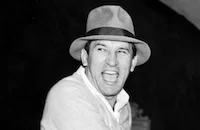A Midsummer Night's Dream

Brief Synopsis
Cast & Crew
Max Reinhardt
Ian Hunter
Verree Teasdale
Hobart Cavanaugh
Dick Powell
Ross Alexander
Film Details
Technical Specs

Synopsis
Theseus, the Duke of Athens, who is preparing to marry Hippolyta, Queen of the Amazons, finds his court full of romantic intrigue. Lysander and Hermia are in love, but Hermia's father Egeus pleads with the duke to force her to marry Demetrius, who also loves her. Theseus agrees that Hermia must obey her father's wishes or live the rest of her life unwed. Following the course of true love, Hermia runs away to the nearby wood to marry Lysander, but is pursued by Demetrius who is in turn followed by Helena, who suffers from unrequited love for him. Once in the woods, the lovers enter another court. Oberon, king of the fairies, is jealous of his beautiful queen Titania's affections for a small changeling boy stolen from an Indian king and enlists the devilish fairy Puck to steal the boy from Titania, giving him a magic love potion, which Puck uses not only on Titania, but on the mortal lovers as well. The love potion causes both Lysander and Demetrius to fall in love with Helena who now spurns them both. In the midst of the activity, a troupe of players, led by Quince, enters the forest to practice their parts. During the rehearsal, Puck turns Bottom, the egotistical leading man, into an ass, and Titania, under Puck's spell, falls in love with the actor. Oberon successfully kidnaps the changeling boy, but pitying Titania, reverses the spell. By dawn, Puck restores Lysander and Hermia to their original affections, leaving Demetrius in love with Helena. Bottom regains his manhood and all the mortals return to Athens for Theseus' wedding. There, on his wedding day, he overrides Egeus' will and gives Hermia to Lysander. Quince and his players entertain the court with their comic love story, starring the dim-witted Flute as the girl Thisby and Bottom as her lover, the ill-fated Pyramus. As the court slips out before the epilogue, Puck and the fairies fly into the empty palace to bid the mortals goodnight.

Cast
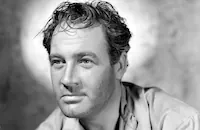
Ian Hunter
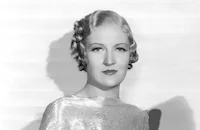
Verree Teasdale
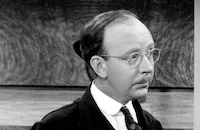
Hobart Cavanaugh

Dick Powell

Ross Alexander
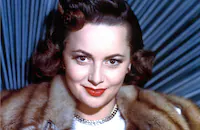
Olivia De Havilland

Jean Muir
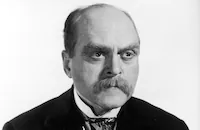
Grant Mitchell
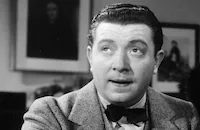
Frank Mchugh
Dewey Robinson
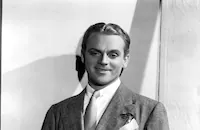
James Cagney

Joe E. Brown
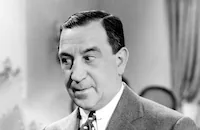
Hugh Herbert
Otis Harlan

Arthur Treacher

Victor Jory

Anita Louise
Nini Theilade

Mickey Rooney
Katherine Frey

Helen Westcott
Fred Sale Jr.
Billy Barty
Sheila Brown

Sara Haden
Angelo Rossitto
Crew
Al Alborn
Milo Anderson
Fred Applegate
Henry Blanke
Ben Bone
Thomas Brannigan
William Classen
Stanley Cortez
Ralph Dawson
Louis De Angelis
Jane Downey
S. Charles Einfeld
Emmett Emerson
Leo F. Forbstein
Dave Forrest
Jack Goodrich
Jack Gray
Anton Grot
Ernest Haller
Faye Hanlin
Byron Haskin
Betty Hobday
Fred Jackman
Percy Kennedy
Charles Kenyon
H. F. Koenekamp
Erich Wolfgang Korngold
Nathan Levinson
Stanley Logan
Warren Low
Mickey Marigold
Mary C. Mccall Jr.
Felix Mendelssohn
R. G. Mitchell
Hal Mohr
John More
Bronislawa Nijinska
Pat O'shea
Max Rée
Gladys Rehfeld
Max Reinhardt
Russell Saunders
Sherry Shourds
George Slight
Robert Surtees
Nini Theilade
United Costumers, Inc.
Charles Veneman
Jack L. Warner
Perc Westmore
Arthur Zellner

Photo Collections
Videos
Movie Clip


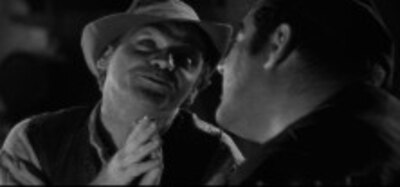
Trailer
Film Details
Technical Specs

Award Wins
Best Cinematography
Best Editing
Award Nominations
Best Director
Best Picture
Articles
A Midsummer Night's Dream (1935)
German director Max Reinhardt's sumptuous productions of the classics, including A Midsummer Night's Dream, were already legendary when the Jewish director fled the Third Reich in 1934 and announced plans to direct a stage tour of the play to premiere at the Hollywood Bowl. This was such a major theatrical event that officials at the Saratoga Grammar school, where de Havilland was completing her education, decided to put on their own open-air production of the play modeled on Reinhardt's famous productions. They even invited some of his associates to attend, where they became enchanted with de Havilland's performance as Puck. After the show, she approached them about auditioning for the play, but instead was invited to join a group of students allowed to attend rehearsals. Heartbroken, she showed up to learn that the role of Puck had already been assigned to the young Mickey Rooney. After her continued pleas for an audition, she was assigned as second understudy to the romantic female lead, Hermia. She wouldn't get any stage time unless film stars Gloria Stuart, who had the role, or her first understudy, Jean Rouveral, couldn't go on. She observed Stuart carefully during rehearsals nonetheless, and practiced the role as though it were her own
Then the impossible happened. A few days before the opening, Rouveral was assigned a film role and had to drop out, then the same thing happened to Stuart. Suddenly de Havilland was going to make her professional stage debut with the leading role in a Shakespearean play. Reinhardt spent three 14-hour days preparing her for the opening and refining her technique. Later she would credit him with teaching her most of what she knew about acting. She went on in front of an all-star audience and scored a triumph. In that opening night audience was Warner Brothers head of production Hal Wallis, who had already signed Reinhardt to direct a film version of the play. He wired Jack Warner in New York to fly back early to catch her performance. Warner fussed about going to all that trouble for "a blind date," but made it by closing night and agreed with Wallis. He had planned to cast Bette Davis as Hermia, but they were having one of their many quarrels, so he choose de Havilland for the part instead. She and Rooney were the only major players held over from the stage production, joining an all-star cast that included James Cagney as the comic Bottom and boy singer Dick Powell as de Havilland's love interest.
A Midsummer Night's Dream was far from the smoothest in Warners' history. Because of a prior contract he'd signed with a French film producer, Reinhardt couldn't even direct the film for the first week of production. Instead a former student of his -- William Dieterle, who had directed only minor films at Warners -- shot the first week from Reinhardt's notes, then stayed on as an assistant to supervise the actual shooting while Reinhardt rehearsed the cast and supervised other elements. Reinhardt's arrival did little to settle things; he was used to a theatrical schedule and refused to start work at 8 a.m. Instead, he rehearsed the actors in the afternoons and evenings. Dieterle would shoot their scenes the next morning, while Reinhardt slept late. In addition, his vision for the film was so ambitious, it was practically unfilmable. He demanded so much foliage on the set that they blocked the lights. As a result, cameraman Hal Mohr replaced Ernest Haller. His first act was to cut back the foliage and spray the leaves with aluminum paint and metal glitter to pick up more light. The footage was spectacular, but disasters continued to pile up. A trained bear used throughout the film died suddenly. Two of the sets burned down. And, worst of all, halfway through filming Rooney broke his leg while tobogganing on Bear Mountain. He had to finish the film in a full cast disguised by foliage and holes in the floor. For some scenes, he was pushed around the set on a tricycle.
None of this phased de Havilland. Neither did Rooney's practical jokes nor Dick Powell making passes at her. Instead, she learned film acting technique from Dieterle and camera technique from Mohr, who later would comment that she asked more insightful questions about his work than any newcomer he'd ever photographed. By the end of the production, she already knew the effect camera angles and lighting would have on how she appeared on screen and had learned to find her light like a seasoned veteran.
A Midsummer Night's Dream opened to mixed reviews and box office, proving too highbrow for the average filmgoer and too lowbrow for the sophisticates. Nonetheless, it won acclaim for its dreamlike scenes and dance numbers choreographed by Bronislava Njinska, sister of the great dancer Njinsky. De Havilland was consistently singled out by reviewers then and in more recent years. Rooney, Cagney and the other clowns in the film (including Joe E. Brown and Hugh Herbert) received more mixed notices at the time, though more recent critics have hailed them as the closest in spirit and performance style to Shakespearean actors of the renown playwright's era. Some of the other performers -- particularly Powell, who still had traces of his Arkansas accent and sounds as if he doesn't know what the lines mean, because he didn't -- continue to draw mocking pans. Yet the film weaves its spell in spite of them. Mohr and the film's editor took home Oscars® for their impressive work. Moreover, the picture launched a number of careers, helping to propel Rooney and de Havilland to stardom and bringing Dieterle more prestigious assignments, including the acclaimed biographical film The Story of Louis Pasteur (1935). It also marked the start of Erich Wolfgang Korngold's long career at Warner Bros. He had worked with Reinhardt in Austria and, like him, fled Europe with the rise of Hitler. Reinhardt brought him to Warners to arrange Felix Mendelssohn's background music and add other melodies from the composer's oeuvre to the score. He would remain to score most of Errol Flynn's swashbucklers, many of which co-starred de Havilland.
Sadly, A Midsummer Night's Dream would do little for Reinhardt's career. Its box-office failure spelled the end of his association with Hollywood. He would end up settling in New York, where he taught and continued to direct, influencing a generation of American stage artists, until his death in 1943.
One interesting note of trivia: The little Changeling Prince is played by Kenneth Anger, who would grow up to be a famous underground film artist (Fireworks, Scorpio Rising, etc.) and author of the once-controversial expose of famous celebrities, Hollywood Babylon.
Producer: Max Reinhardt
Director: Max Reinhardt, William Dieterle
Screenplay: Charles Kenyon, Mary C. McCall, Jr.
Based on a play by William Shakespeare
Cinematography: Hal Mohr
Art Direction: Anton Grot
Music: Leo F. Forbstein, Erich Wolfgang Korngold
Principal Cast: James Cagney (Bottom), Dick Powell (Lysander), Joe E. Brown (Flute), Jean Muir (Helena), Hugh Herbert (Snout), Ian Hunter (Theseus), Frank McHugh (Quince), Victor Jory (Oberon), Olivia de Havilland (Hermia), Ross Alexander (Demetrius), Verree Teasdale (Hippolyta, Queen of the Amazons), Anita Louise (Titania), Mickey Rooney (Puck), Arthur Treacher (Ninny's Tomb), Billy Barty (Mustard Seed), Kenneth Anger (Changeling Prince), Angelo Rossitto (Gnome).
BW-144m. Closed captioning.
by Frank Miller

A Midsummer Night's Dream (1935)
Quotes
I have had a most rare vision. I have had a dream; past the wit of man to say what dream it was. Methought I was---man is but an ass if he go about to expound this dream. Methought I was---and methought I had---man is but a patched fool if he will offer to say- Bottom
what methought I was and what methought I had.- Bottom
Hermia, the course of true love never did run smooth.- Lysander
Lord, what fools these mortals be!- Puck
Trivia
'Rooney, Mickey' broke his leg during filming, and was wheeled around behind bushes on a bicycle during filming.
Gloria Stuart was cast as Hermia, but when she fell ill, the part went to her understudy, Olivia de Havilland.
William Dieterle had full charge as director for about a week because of a breach-of-contract suit filed against Max Reinhardt by a French film company. The judge found in favor of Reinhardt, and lifted the restraining order.
The movie was banned in Germany by the Nazi government because Reinhardt and Felix Mendelssohn-Bartholdy were Jews and considered undesirable.
When the forest that Reinhardt designed could not be lit properly, cinematographer Hal Mohr thinned them slightly, sprayed them with aluminum paint and covered them with cobwebs and tiny metal particles to reflect the light. As a result, he became the first write-in winner of an Academy Award.
Notes
Olivia de Havilland, whose name was misspelled on the screen as "Oliva de Haviland," was given the role of Hermia in Max Reinhardt's Hollywood Bowl production of the play after he saw her in a small production of the play in Saratoga. She was originally hired as the understudy and replaced Gloria Stuart when she was unable to go on because of illness. Studio records indicate that Bette Davis was a candidate for the part of Hermia. Despite Reinhardt's preference for Cagney for the role of Bottom, the studio wanted Guy Kibbee. Mickey Rooney broke his leg before production started and he had to be filmed moving on a tricycle behind the scenery. Studio records indicate that Ernest Haller began as the film's cinematographer but was replaced by Hal Mohr. A news item in Daily Variety notes that publicity depended heavily on still photographs. Over 1,500 stills were taken. News items in Daily Variety note that a restraining order was issued which barred Reinhardt from participating in any directing activities on a motion filed by a French theatrical firm which charged that Reinhardt breached his contract with them. In the meantime, William Dieterle had full charge of the set-Reinhardt was not even allowed to be on the sidelines. The restraining order was lifted about a week later when a judge found in favor of Reinhardt. According to Daily Variety, Warner Bros. was "unofficially notified" that the picture would be banned in Germany as Reinhardt and Mendelssohn were both considered undesirables. Reinhardt was a famous European theatrical producer. A Jew, he left Hitler's Germany for the United States but never made another movie. He earned his living by running a drama school in Hollywood. Composer Erich Korngold was another ex-patriot. He remained at Warner Bros. where he became one of their resident composers. According to Hal Wallis' autobiography, when the forest that Reinhardt designed could not be lit effectively, Mohr thinned the trees, sprayed them with aluminium paint and covered them with cobwebs and tiny metal particles that reflected the light. As a result of his work, he became the first write-in winner of an Academy Award. The film itself was nominated for Best Picture and Ralph Dawson received the Oscar for editing. According to Kenneth Anger, he played the changeling boy.

Miscellaneous Notes
Released in United States 1935
Released in United States 1974
Released in United States 1935
Released in United States 1974 (Shown at FILMEX: Los Angeles International Film Exposition March 28 - April 9, 1974)



